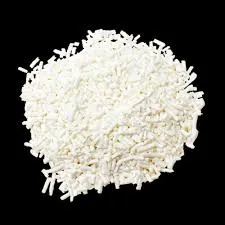
trichloroisocyanuric acid price
Understanding the Price Dynamics of Trichloroisocyanuric Acid
Trichloroisocyanuric acid (TCCA) is a widely used chemical compound primarily known for its application as a disinfectant and sanitizer in various industries, particularly in water treatment, swimming pools, and sanitation. As an important chemical in maintaining public health standards, the price of TCCA plays a crucial role in several sectors, from agriculture to municipal water supply, directly impacting the cost of related services and products. This article explores the factors influencing the price of TCCA, current market trends, and future projections.
Factors Affecting TCCA Prices
1. Raw Material Costs The production of TCCA relies on several raw materials, including cyanuric acid and chlorine. Any fluctuations in the price of these base materials can significantly affect TCCA pricing. For instance, if chlorine prices rise due to supply chain disruptions or increased demand, TCCA manufacturers may pass these costs onto consumers.
2. Supply and Demand The basic economic principle of supply and demand heavily influences TCCA prices. The demand for TCCA tends to peak in warmer months, as swimming pools and recreational facilities require regular disinfection. Additionally, the increasing emphasis on public health measures in light of recent global health crises has led to heightened demand for effective disinfectants, thereby straining supply and impacting prices.
3. Geopolitical Factors Geopolitical tensions can also play a role in TCCA pricing. For example, trade tariffs, sanctions on specific countries, or disruptions in manufacturing due to political unrest can lead to limited availability of TCCA in certain markets. This can drive up prices, particularly in regions heavily reliant on imports.
4. Regulations and Environmental Concerns Regulatory frameworks surrounding chemical use can impact production costs and, consequently, market prices. Stricter environmental regulations might require manufacturers to invest in cleaner technologies, thereby increasing operational costs. Such costs would eventually reflect in the selling price of TCCA. Moreover, as consumers become more environmentally conscious, a shift towards eco-friendlier alternatives could affect TCCA demand dynamics.
trichloroisocyanuric acid price

5. Competition and Market Structure The competitive landscape within the chemical industry also affects pricing strategies. In markets with many players, prices may remain stable due to competition. However, in regions where a few companies dominate the market, there may be less price pressure, allowing for higher markups on TCCA.
Current Market Trends
As of late 2023, trends indicate a fluctuating market for TCCA. Reports suggest that while prices have risen in the short term due to a surge in demand following the COVID-19 pandemic, there are indications of stabilization as supply chains recover. Countries are focusing on stockpiling TCCA in anticipation of future outbreaks, leading to a temporary spike in prices.
Additionally, the market is starting to see an influx of innovative alternatives to traditional TCCA products. As manufacturers explore new formulations that are less harmful to the environment, traditional TCCA may experience increased competition, potentially affecting its pricing structure.
Future Projections
Looking ahead, the price of TCCA is likely to remain dynamic, influenced by ongoing global economic conditions and changes in regulatory landscapes. Experts suggest that as public health continues to be a priority, demand for effective sanitization solutions will persist, keeping TCCA prices relatively high in the near term. However, as more eco-friendly alternatives are developed and adopted, there could be downward pressure on TCCA prices.
In conclusion, the price of trichloroisocyanuric acid is shaped by a complex interplay of various factors, including raw material costs, supply and demand dynamics, geopolitical events, and the competitive landscape. Keeping an eye on these trends and developments will be crucial for businesses and consumers alike, as they navigate the implications of TCCA pricing on health and sanitation strategies in an ever-evolving market.
-
Buy High-Quality Trichloroisocyanuric Acid for Sale | TCCA 90% SupplierNewsAug.30,2025
-
Pure Sodium Dichloroisocyanurate Dihydrate | Powerful DisinfectantNewsAug.29,2025
-
Industrial Chemicals: Quality & Purity for Every IndustryNewsAug.28,2025
-
Nitrile Rubber Honoring Strict Production StandardsNewsAug.22,2025
-
Aspartame Ingredients Honoring Food Safety ValuesNewsAug.22,2025
-
Fertilizer for Balanced Plant NutritionNewsAug.22,2025
-
Cyanide Gold Processing with High Purity AdditivesNewsAug.22,2025
Hebei Tenger Chemical Technology Co., Ltd. focuses on the chemical industry and is committed to the export service of chemical raw materials.
-

view more DiethanolisopropanolamineIn the ever-growing field of chemical solutions, diethanolisopropanolamine (DEIPA) stands out as a versatile and important compound. Due to its unique chemical structure and properties, DEIPA is of interest to various industries including construction, personal care, and agriculture. -

view more TriisopropanolamineTriisopropanolamine (TIPA) alkanol amine substance, is a kind of alcohol amine compound with amino and alcohol hydroxyl, and because of its molecules contains both amino and hydroxyl. -

view more Tetramethyl Thiuram DisulfideTetramethyl thiuram disulfide, also known as TMTD, is a white to light-yellow powder with a distinct sulfur-like odor. It is soluble in organic solvents such as benzene, acetone, and ethyl acetate, making it highly versatile for use in different formulations. TMTD is known for its excellent vulcanization acceleration properties, which makes it a key ingredient in the production of rubber products. Additionally, it acts as an effective fungicide and bactericide, making it valuable in agricultural applications. Its high purity and stability ensure consistent performance, making it a preferred choice for manufacturers across various industries.





